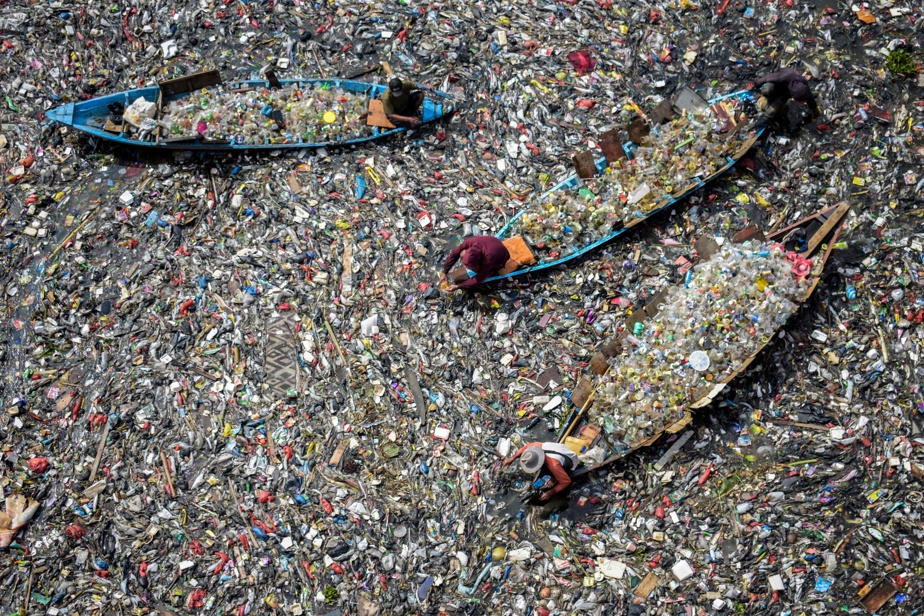(Montreal) Micro- and nanoplastic particles flooding the environment could increase the risk of suffering from non-communicable diseases such as cancer, diabetes, cardiovascular disorders and chronic lung diseases, warns a new international study to which participated two Canadian researchers.
These particles have been detected in virtually every organ of the human body, from the brain to the reproductive organs, but their impact on health remains poorly understood and needs to be studied further, the authors of the study argue.
“With this study, we are really launching a call to arms,” said Steve Allen, who was a professor at Dalhousie University when he contributed to this work. We want to attract the attention of the medical community. We believe this is an issue that needs to be examined from a human health perspective. »
Studies have detected an association between inflammation and noncommunicable diseases. Since micro- and nanoplastic particles are suspected to be a likely source of inflammation, their presence could increase the risk of suffering from these diseases.
“As particles move through the environment, plastic is particularly adept at absorbing the chemicals it comes into contact with, and many of these are legacy chemicals that we would like to forget,” he said. recalled Mr. Allen, whom The Canadian Press joined in Laos, where he is busy launching a new non-governmental organization to combat plastic pollution after leaving his post at Dalhousie.
All of these chemicals, he added, adhere very well to plastic. And if we ingest, inhale or simply absorb through our skin these particles containing these chemicals, they can end up anywhere in our body, including our brains, because they can cross the blood-brain barrier.
There is no place in our body where they cannot go.
Steve Allen, one of the researchers of this study
The study authors point out that the relationship between particles and noncommunicable diseases resembles that between these diseases and other particles, whether of natural or human origin. In both cases, they say, the body is trying to defend itself against these foreign substances, which increases the risk of an excessive and disorganized immune response.
These particles are so tiny that they can enter the bloodstream (for example, by crossing the intestinal barrier) and go directly to the organs. In addition to possibly having carcinogenic properties, they could be a source of oxidative stress and mimic the action of certain hormones.
Put the toothpaste back in the tube
Mr. Allen concedes that it is now impossible to put the toothpaste back in the tube and that exposure to micro- and nanoplastics is as inevitable as it is impossible to reverse.
These particles are there for good and we can only try to limit their quantity, he said.
We don’t know the long-term effects yet. We don’t know what the tipping point is, where we can’t stop. And what worries me, honestly, is that we’re already past it. We have so much in the environment that we can’t turn back. We can’t stop and not have health impacts.
Steve Allen, one of the researchers in this study
The situation is all the more worrying since researchers have found, in the stools of babies and toddlers, concentrations of micro- and nanoplastic particles far higher than the concentrations in adult stools. This could be due to the ubiquity of plastic in children’s products or the tendency of children to put everything in their mouths. We are therefore concerned about the consequences that exposure that begins so early in life could have.
Now is the time for environmental specialists and human health specialists to work together to take the full measure of the problem, he added, since each has expertise and tools that are lacking to the other.
And these studies will have to be impeccable, said Mr. Allen, to avoid repeating the mistakes of the past, for example when the hydrocarbon giants demolished the conclusions of botched studies which denounced the dangerousness of their products.
” We [les auteurs de l’étude] “We are essentially environmental scientists,” Mr. Allen said in conclusion. We could see that links existed [avec les maladies non transmissibles]. We could be wrong, but I don’t think so. Now we need help from the medical community. »
Micro and nanoplastic particles come from the degradation of larger plastic items. Microplastics range in size from one micrometer (one millionth of a meter) to about five millimeters. Nanoplastics are measured in billionths of a meter. For comparison, the circumference of a human hair is about 70 micrometers.
Humans are exposed to micro- and nanoplastic particles in outdoor and indoor environments through food, beverage consumption, air, and many other sources, including cosmetics and personal care products.
These particles have been found in fish, salt, beer and plastic bottled drinks. They are also found in the air, where they are released by synthetic clothing, plastic bedding during sleep, carpets or plastic furniture. Other possible sources are fertilizers, soil, irrigation and uptake by food crops or agricultural products.
It is estimated that cancer, diabetes, cardiovascular disorders and chronic lung diseases together cause 71% of deaths that occur each year on the planet.
The findings of this study were published by the journal Cell Reports Medicine.
